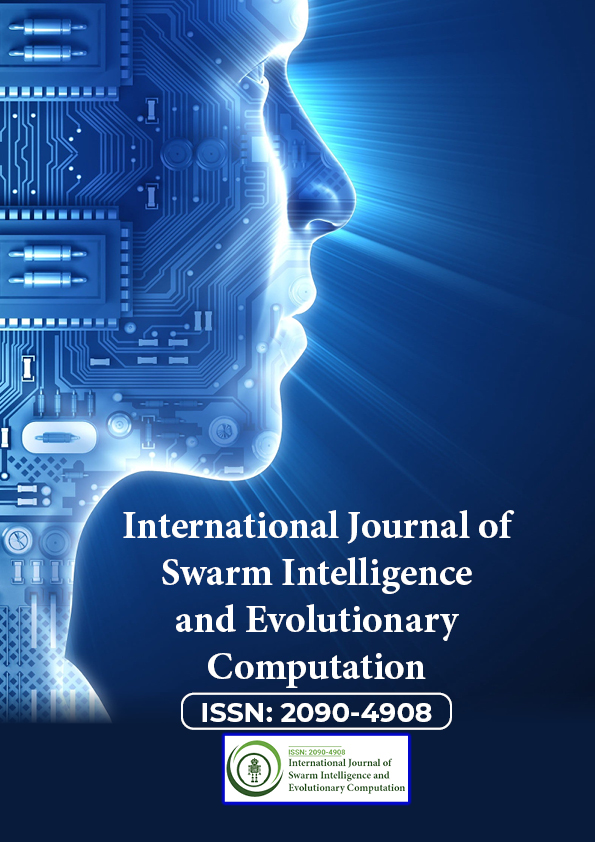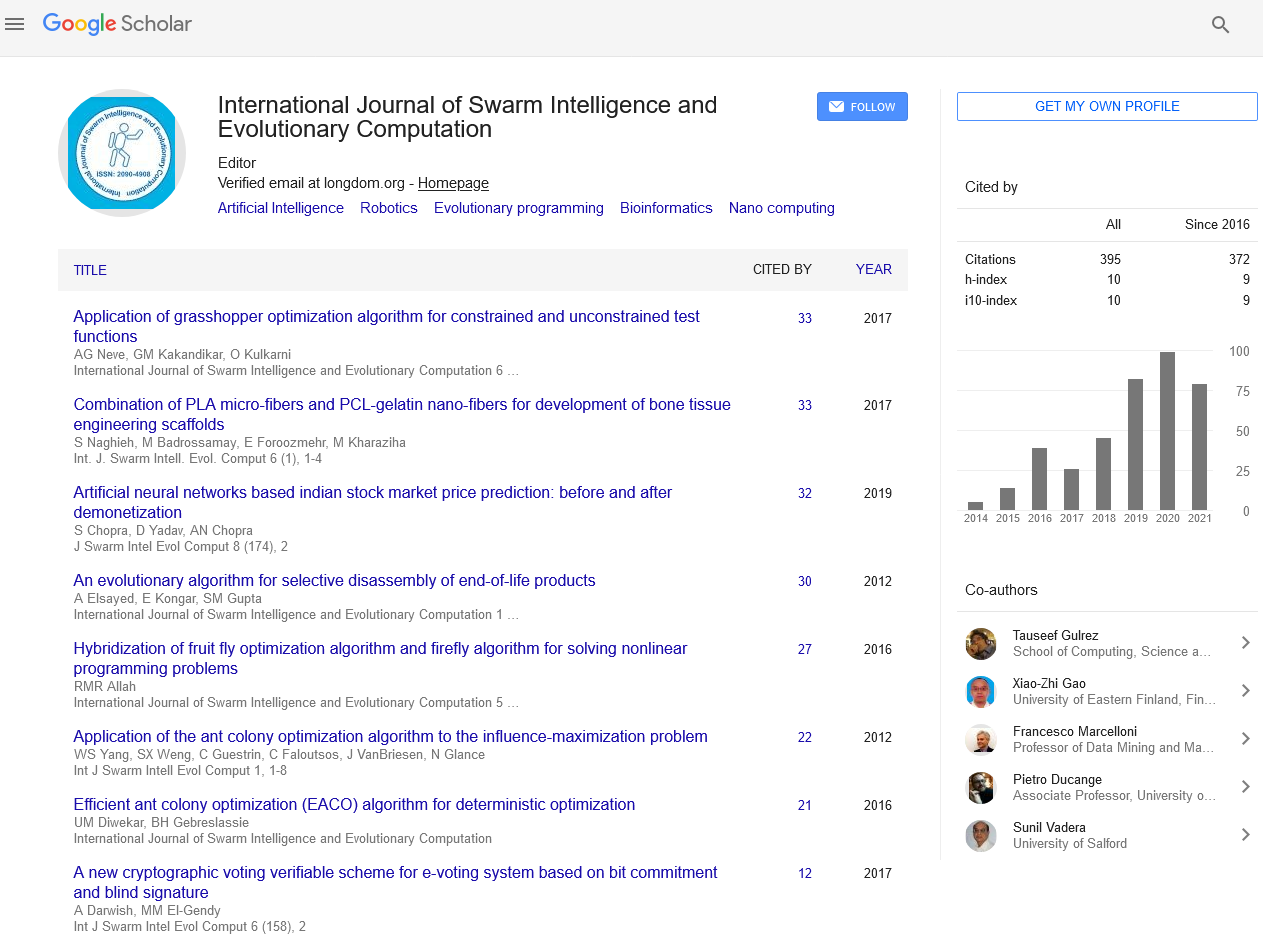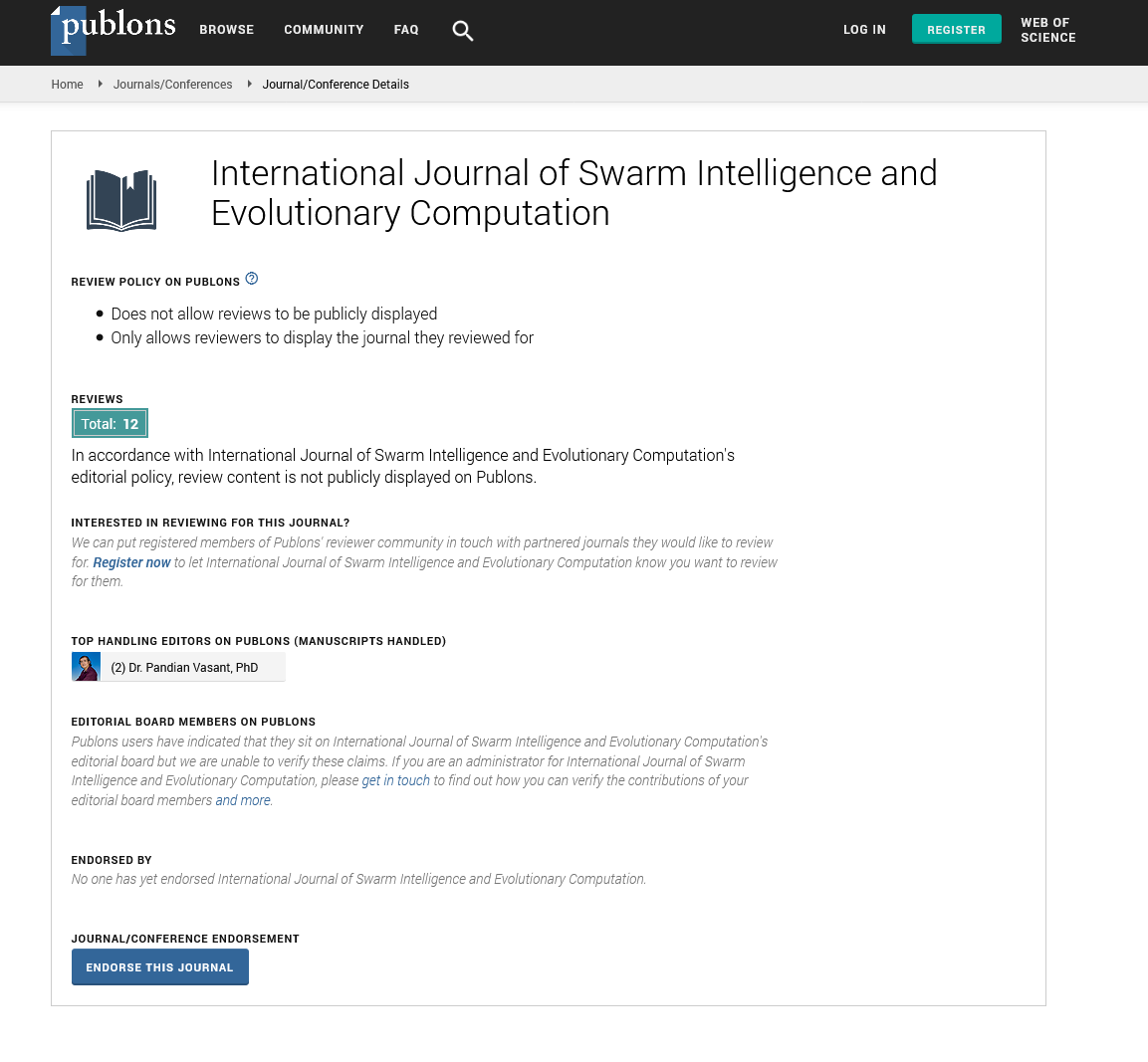Indexed In
- Genamics JournalSeek
- RefSeek
- Hamdard University
- EBSCO A-Z
- OCLC- WorldCat
- Publons
- Euro Pub
- Google Scholar
Useful Links
Share This Page
Journal Flyer

Open Access Journals
- Agri and Aquaculture
- Biochemistry
- Bioinformatics & Systems Biology
- Business & Management
- Chemistry
- Clinical Sciences
- Engineering
- Food & Nutrition
- General Science
- Genetics & Molecular Biology
- Immunology & Microbiology
- Medical Sciences
- Neuroscience & Psychology
- Nursing & Health Care
- Pharmaceutical Sciences
Opinion Article - (2024) Volume 13, Issue 5
Analyzing the Dynamics of Collective Behavior in Multi-Agent Systems
Wang Li*Received: 26-Aug-2024, Manuscript No. SIEC-24-27458; Editor assigned: 28-Aug-2024, Pre QC No. SIEC-24-27458 (PQ); Reviewed: 11-Sep-2024, QC No. SIEC-24-27458; Revised: 18-Sep-2024, Manuscript No. SIEC-24-27458 (R); Published: 25-Sep-2024, DOI: 10.35248/2090-4908.24.13.392
Description
Multi-Agent Systems (MAS) consist of multiple interacting agents that work together to achieve specific goals or perform tasks. These agents can represent robots, software agents, or even individuals in a network. The dynamics of collective behavior in these systems, which emerge from simple local interactions between agents, play a critical role in determining how efficiently a system functions as a whole. By understanding and modeling these interactions, researchers can design MAS that exhibit desirable properties, such as coordination, cooperation and emergent problem-solving abilities.
Foundations of Collective Behavior
The concept of collective behavior in multi-agent systems is inspired by the behavior of social organisms, such as ant colonies, bird flocks and bee swarms. These natural systems exhibit remarkable coordination without the need for centralized control. Instead, individual agents follow simple rules based on local information and interactions with other agents. The resulting behavior often leads to efficient global outcomes, such as optimized foraging patterns, synchronized movement, or collective decision-making.
In MAS, agents can be categorized as either autonomous or semi-autonomous and their interactions are typically governed by communication, sensor data and predefined behavioral protocols. In systems where agents operate independently, collective behavior can emerge from the cooperation between agents who share information or collaborate towards a common goal. For example, in a swarm of drones, each drone may individually avoid obstacles but, through local communication, the group can navigate together without collisions.
The dynamics of collective behavior in MAS can be understood through a few fundamental principles that guide agent interactions:
Self-organization: In MAS, agents often organize themselves into patterns or structures without the need for a central controller.
This self-organizing behavior allows agents to adapt to changing environments and to solve complex problems collaboratively. The ants' ability to find the shortest path between a food source and their nest, for example, is a self-organizing phenomenon that emerges from local interactions.
Emergence: The most interesting aspect of collective behavior is emergence, where global patterns or behaviors arise from the interactions of simple agents. Emergence is what enables MAS to solve complex tasks that individual agents would struggle with, such as distributed decision-making in a team of robots or coordinated routing in a network.
Decentralization: MAS typically operate with no central controller, relying on decentralized control instead. Agents make local decisions based on limited information, but as they interact with each other, they can reach an optimal or near-optimal global solution. This decentralized nature makes MAS resilient to failures, as the system can continue to function even if individual agents fail.
Cooperation and competition: MAS agents may cooperate or compete, depending on the context. Cooperation is essential for tasks that require collective effort, such as resource sharing or joint problem-solving. In contrast, competition can occur when agents seek to maximize individual objectives, such as in resource allocation problems or multi-objective optimization tasks.
Applications of collective behavior in multi-agent systems
The principles of collective behavior are highly applicable in a wide range of domains, from robotics to social network analysis and traffic management. Some notable applications include:
Autonomous robotics and swarm robotics: In autonomous robotics, collective behavior plays an important role in enabling robots to collaborate seamlessly. Swarm robotics, in particular, relies on the collective behavior of numerous robots that work together to complete tasks like analysis, mapping, or search-andrescue missions. By supporting collective behavior, swarm robots can cover large areas efficiently and adapt to changing environments, even in scenarios with limited communication.
Smart grid systems: In energy management, multi-agent systems are used to optimize the distribution and consumption of energy in smart grids. Agents representing individual consumers, power plants, and distribution networks cooperate to ensure the efficient operation of the grid, minimizing energy loss, balancing supply and demand and reducing costs.
Traffic management: Collective behavior is also applied in intelligent traffic systems, where agents represent vehicles or traffic lights. Through decentralized communication and local decision-making, these agents can optimize traffic flow, reduce congestion and improve road safety. For instance, a system of self-driving cars can dynamically adjust routes based on traffic conditions, ensuring smooth and efficient transportation.
Distributed problem solving: MAS can be used to tackle largescale problems in areas such as logistics, optimization and scheduling. By breaking down complex tasks into smaller subtasks, agents can independently solve parts of the problem and later combine their solutions. This collaborative approach enhances computational efficiency and reduces the time required to reach a solution.
Market systems and auctions: Collective behavior in MAS can model economic systems, such as market dynamics or auctions. Each agent represents a participant in the market and the interactions between agents (bidding, offering and negotiating) can lead to optimal resource allocation and pricing. Understanding these behaviors helps design more efficient market mechanisms and improve economic forecasting.
The dynamics of collective behavior in multi-agent systems provide powerful solutions for complex, large-scale problems that require coordination, cooperation and decentralized control. By understanding and modeling these interactions, researchers can design MAS that are adaptive, resilient and efficient across various domains, from robotics to economics. As technology continues to evolve, the application of collective behavior in MAS will likely expand, offering innovative solutions to some of the most challenging problems of our time.
Citation: Li W (2024). Analyzing the Dynamics of Collective Behavior in Multi-Agent Systems. Int J Swarm Evol Comput. 13:392.
Copyright: © 2024 Li W. This is an open-access article distributed under the terms of the Creative Commons Attribution License, which permits unrestricted use, distribution and reproduction in any medium, provided the original author and source are credited.


